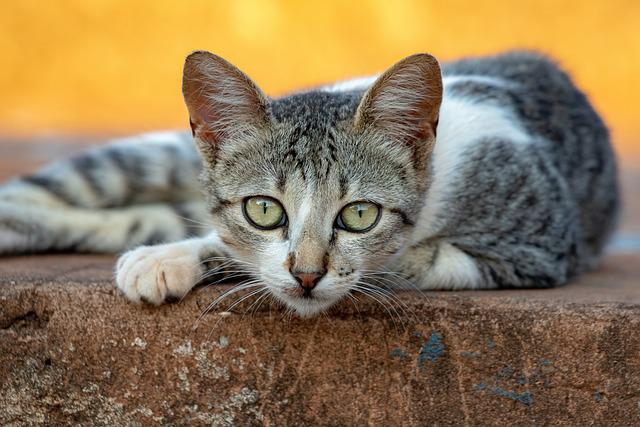Can You Get Ringworm From a Cat: What You Need to Know About Ringworm and Its Transmission
Yes, it is possible to get ringworm from a cat. Ringworm is a common fungal infection affecting humans and animals, including cats. Ringworm is spread through contact with infected skin or hair or contaminated objects such as bedding, grooming tools, or furniture. Cats with ringworm may not show any symptoms or have hair loss, redness, scaly patches, or bumps on their skin.


Table of Contents
Transmission of Ringworm
Ringworm can be transmitted from a cat to a human or another cat through direct contact with an infected cat’s skin or hair or by touching contaminated objects such as bedding, grooming tools, or furniture. The spores of the ringworm fungus can survive in the environment for several months, so it’s important to thoroughly clean and disinfect any surfaces or objects that may have come into contact with an infected cat.
Ringworm is more likely to be transmitted from cats to humans with weakened immune systems, such as young children, elderly people, or people with chronic illnesses. Therefore, it’s important to take precautions when handling an infected cat, such as wearing gloves and washing your hands thoroughly with soap and water after handling the cat or its belongings.
If you suspect your cat has ringworm or if you develop a rash or other symptoms after coming into contact with an infected cat, it’s important to seek medical attention to determine if you have ringworm and receive appropriate treatment.
Factors Increasing the Risk of Developing Ringworm
Weak Immune System
According to the Centers for Disease Control and Prevention, a weak immune system can make a cat more susceptible to various health problems, including ringworm. The immune system is responsible for defending the body against infections and diseases; it can’t do its job effectively when compromised.
Some factors that can weaken a cat’s immune system include age. For example, kittens and seniors may have weaker immune systems than healthy adult cats. For example, cats with chronic illnesses such as diabetes, kidney disease, or FIV are more susceptible to infections and have weaker immune systems. In addition, some medications, such as steroids or chemotherapy, can weaken the immune system.
Stress
Stress can also contribute to a cat’s susceptibility to ringworm. For example, cats are sensitive animals, and they can experience stress in various situations, such as changes in routine, new people or animals in the household, or loud noises.
Stress can weaken a cat’s immune system, making them more susceptible to infections and diseases like ringworm. Additionally, stress can cause a cat to groom excessively, leading to hair loss and creating an environment more conducive to ringworm growth.
Creating a calm and consistent environment is important to reduce your cat’s stress levels. This may involve providing a quiet space for them to retreat to, providing regular play and exercise, and avoiding sudden changes in their routine. Additionally, consider using pheromone sprays or diffusers to help calm your cat and reduce stress levels.
Malnourishment
Malnourishment can also make a cat more susceptible to ringworm. For example, when a cat is not receiving adequate nutrition, their immune system can weaken, making them more susceptible to infections and diseases like ringworm.
Additionally, malnourished cats may have dry, flaky, or otherwise damaged skin, creating an environment more conducive to ringworm growth.
To prevent malnourishment, it’s important to provide your cat with a balanced and nutritious diet that meets its nutritional needs. This may involve consulting with your veterinarian to determine your cat’s best diet based on age, activity level, and overall health.
Crowded or Unsanitary Living Conditions
Crowded or unsanitary living conditions can also contribute to the spread of ringworm in cats. For example, when cats are kept close to one another, such as in shelters or catteries, or unclean environments, the risk of infection can be higher.
Ringworm is a highly contagious fungal infection, and it can spread easily from cat to cat through direct contact with infected hair or skin. Additionally, the fungus spores can live in the environment for months, making it easy for the infection to spread from contaminated surfaces.
To prevent the spread of ringworm in crowded or unsanitary living conditions, it’s important to maintain a clean and hygienic environment. This may involve regular cleaning and disinfecting surfaces, providing each cat with food and water bowls, and keeping cats with suspected or confirmed ringworm isolated from other cats.
Lack of Grooming


Lack of grooming can also contribute to the development of ringworm in cats. For example, when cats do not groom themselves regularly, dead skin cells, oil, and dirt can accumulate on their skin, creating an environment that is more hospitable to the growth of fungi, including the ringworm fungus.
Cats may be less likely to groom themselves if sick, stressed, or have mobility issues that make reaching certain areas of their body difficult. Older cats or cats with long hair may also be more prone to ringworm if they cannot keep themselves clean.
To prevent ringworm from developing due to poor grooming, it’s important to help your cat maintain good hygiene. This may involve regularly brushing your cat’s fur to remove dead skin cells and dirt and bathing your cat as needed to keep their skin and fur clean.
Symptoms of Ringworm in Cats
Hair Loss
Hair loss is one of the most common symptoms of ringworm in cats. Ringworm is a fungal infection affecting a cat’s skin, hair, and nails. The fungi that cause ringworm can live on the surface of a cat’s skin or invade deeper tissue layers. When the fungi infect a cat’s hair follicles, they can cause the hair to break off at the base, leading to patchy hair loss.
In cats, ringworm typically causes circular areas of hair loss with raised, red edges. These lesions may be scaly, crusty, itchy, or uncomfortable for your cat. Hair loss caused by ringworm can occur anywhere on your cat’s body, but it is most commonly seen on the face, ears, tail, and paws.
Scaly Skin
Scaly skin can be a symptom of ringworm in cats. Ringworm is a fungal infection affecting a cat’s skin, hair, and nails. When the fungi infect a cat’s skin, they can cause various symptoms, including scaly, flaky, or crusty skin.
In cats, ringworm typically causes circular areas of hair loss with raised, red edges. These lesions may be scaly, crusty, itchy, or uncomfortable for your cat. However, if your cat is experiencing scaly skin along with other symptoms such as hair loss, it’s important to seek veterinary care as soon as possible.
Thickened or Discolored Nails
Thickened or discolored nails can also be a symptom of ringworm in cats. Ringworm is a fungal infection affecting a cat’s skin, hair, and nails. When the fungi infect a cat’s nails, they can cause the nails to become thickened, discolored, or brittle.
Ringworm can also cause other symptoms in a cat’s nails, such as cracking or splitting or developing small, raised bumps around the base of the nail. Sometimes, the nails may even detach from the nail bed, a condition known as onychomycosis.
If you notice any changes in your cat’s nails, it’s important to seek veterinary care. Your veterinarian can perform a diagnostic test to determine if your cat has ringworm and recommend an appropriate treatment plan to help clear the infection.
Crusty Lesions
Crusty lesions are one of the common symptoms of ringworm in cats. Ringworm is a fungal infection affecting a cat’s skin, hair, and nails. When the fungi infect a cat’s skin, they can cause circular or irregular-shaped areas of hair loss, along with redness, itching, and flakiness. These areas may also develop a crusty or scabby texture, which can be painful and uncomfortable for the cat.
Crusty lesions can appear anywhere on the cat’s body but are most commonly seen on the head, ears, and limbs. The lesions may start as small bumps or pustules and then progress to form a crusty or scabby layer over the affected area. The crusty lesions can also spread to other body parts if left untreated.
Itchiness


Itchiness is another common symptom of ringworm in cats. When a cat is infected with ringworm, the fungi can cause the skin to become inflamed and itchy. In addition, the cat may start scratching or biting at the affected area, which can worsen the infection and spread it to other parts of the body.
Itchiness may accompany other symptoms, such as hair loss, redness, and flakiness. The severity of the itchiness can vary depending on the extent of the infection and the cat’s response to the fungus.
